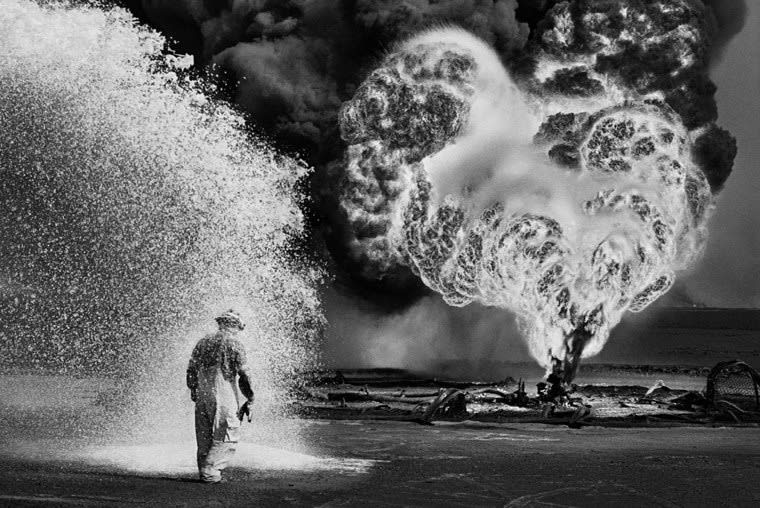
“It felt as if the end were nigh. With the sun obliterated by a dark smoked Dantean landscape stretched as far as the eye could see. The horizon itself was marked by torches of fire where burning oil leapt from the lifeless desert. And all around, thick pillars of crude oil spewed into the sky before falling back to earth to form treacly black lakes that, without warning, could become gigantic infernos. Finally there was the noise, a deafening roar that only grew louder as I came closer to the source of this cataclysm, the hundreds of oil wells that had been sabotaged and set alight by the Iraqi army near the end of its occupation of Kuwait between early August 1990 and late 1991".
~ Sebastião Salgado
Kuwait. A Desert on Fire
Sebastião once again bore witness for all of us in the early 1990’s to one of the most devastating acts of destructions ever seen in the 20th Century. There are acts of natural disaster that no one can predict and control and then there are premeditated human acts of disaster. This one was Saddam Hussein’s farewell gesture to the world and his perceived enemies. He created hell on earth in blowing up close to 600 oil fields.
The lesson we learn is that there is always a close relationship that exists between humans and the environment in any conflict and we better take heed. Everything that man does will always effect the environment in the end.
The images Sebastião produced are shocking and astounding unlike any others I have seen. For me, despite the horror depicted, there is some small affirmation in them as they display the heroic efforts of a group of people, the skilled firefighters mainly from Canada and Houston, who risked their lives to contain it.
